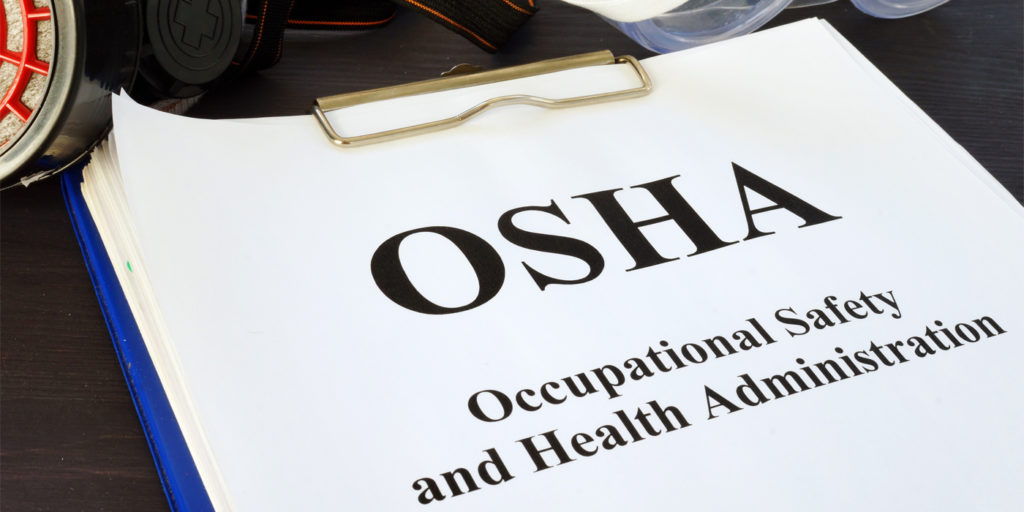An OSHA inspection is something that many businesses fear – whether they have something to fear or not. But an understanding of the process can be helpful if you’re uncertain what happens before, during and after an inspection.
General Inspection Information
OSHA inspectors, or compliance safety and health officers, are trained industrial hygienists and safety professionals whose goal is to ensure compliance with OSHA. By doing so, employers and workers can reduce on-the-job hazards and prevent injuries, illnesses and deaths in the workplace.
Inspectors focus on several situations in order of priority:
- Imminent danger situations, or those hazards that could cause death or serious physical harm. Compliance officers will ask employers to correct these hazards immediately or remove endangered employees.
- Severe injuries and illnesses. Employers must report all work-related fatalities within eight hours; and all work-related inpatient hospitalizations, amputations or losses of an eye within 24 hours.
- Worker complaints (whether anonymous or not) are considered a high priority.
- Referrals of hazards from other federal, state or local agencies, individuals, organizations or the media.
- Targeted inspections, which are aimed at specific high-hazard industries or workplaces that have experienced high rates of injuries and illnesses.
- Follow-up inspections to make sure violations cited during previous inspections were corrected.
In most cases, OSHA conducts inspections without notifying a business in advance. For lower-priority hazards, OSHA may call the employer to describe safety and health concerns, following up with communication providing details on alleged safety and health hazards. The employer must respond within five working days, identifying any problems found and noting corrective actions taken or planned. If the complainant is satisfied with the response, the employer can avoid an on-site inspection.
During the Inspection
If an OSHA inspector does visit in person, here’s what to expect:
Presentation of credentials. The on-site inspection begins with the presentation of the compliance officer’s credentials, which include both a photograph and a serial number. Employers have the right to require the officers to obtain an inspection warrant before entering the work site.
Opening conference. The compliance officer will explain why OSHA selected the workplace for inspection and describe the scope of the inspection, walkaround procedures, employee representation and employee interviews. The employer then selects a representative to accompany the compliance officer during the inspection. An authorized representative of the employees, if any, also has the right to accompany an inspector. The compliance officer will consult privately with a reasonable number of employees during the inspection.
Walkaround. Following the opening conference, the compliance officer and the representatives will walk through the portions of the workplace covered by the inspection, looking for hazards that could lead to employee injury or illness. The compliance officer will also review worksite injury and illness records and the posting of the official OSHA poster. During the walkaround, compliance officers may point out some apparent violations that can be corrected immediately. While the law requires that these hazards must still be cited, prompt correction is a sign of good faith on the part of the employer. Compliance officers try to minimize work interruptions during the inspection and will keep confidential any trade secrets observed.
Closing conference. After the walkaround, the compliance officer holds a closing conference with the employer and the employee representatives to discuss the findings. The compliance officer discusses possible courses of action an employer may take following an inspection, which could include an informal conference with OSHA or contesting citations and proposed penalties. The compliance officer also discusses consultation services and employee rights.
After the Inspection
When an inspector finds violations of OSHA standards or serious hazards, OSHA may issue citations and fines, and they must do so within six months of the violation’s occurrence.
Citations describe OSHA requirements allegedly violated, list any proposed penalties and give a deadline for correcting the alleged hazards. Violations are categorized as willful, serious, other-than-serious, de minimis, failure to abate and repeated.
OSHA’s primary goal is correcting hazards and maintaining compliance rather than issuing citations or collecting penalties. Therefore, OSHA may reduce penalties for small employers and those acting in good faith. For serious violations, OSHA may also reduce the proposed penalty based on the gravity of the alleged violation. For alleged willful violations, though, OSHA generally does not make a good faith adjustment.
In addition, when OSHA issues a citation to a business, it also offers the opportunity for an informal conference with the OSHA area director to discuss citations, penalties, abatement dates or other information pertinent to the inspection. The agency and the employer may work out a settlement agreement to resolve the matter and eliminate the hazard.
The other option is that employers have 15 working days after receipt of citations and proposed penalties to formally contest the alleged violations and/or penalties by sending a written notice to their area director. OSHA forwards this to the Occupational Safety and Health Review Commission for independent review.
Citations, penalties and abatement dates that are not challenged by the employer or settled become a final order of the Occupational Safety and Health Review Commission.
Expect the Unexpected
No business wants a surprise inspection. But when you know what to expect – combined with your own regular inspections, training and attention to the hazards of your workplace – the prospect of an OSHA visit might not be so intimidating.
Kyle Holt is the president of S/P2, an online safety and pollution prevention training system for the automotive, heavy-duty/diesel, welding, construction, cosmetology and culinary industries. He can be reached at [email protected].














